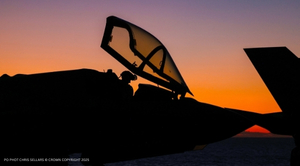News
Interoperability Is Redefining Coalition Air Power
June 20, 2025
Inside Lockheed Martin’s global approach to 21st-century deterrence.
At the 2025 Paris Air Show, Lockheed Martin hosted a strategic discussion focused on one of the most urgent and complex defense imperatives facing allied nations today: how to achieve true warfighting integration across domains, platforms, and partner nations—at operational speed, and at scale.
In Theaters Now
In a near-peer threat environment where adversaries are rapidly closing capability gaps, simply fielding exquisite individual platforms is no longer sufficient. Instead, warfighting advantage will be defined by the ability to connect, fuse and act on data across disparate platforms, services, and allied forces.
“For some time now, we’ve been focused on integrating horizontally across the entire enterprise—air, land, sea, space and cyber spectrum,” said Greg Ulmer, president of Lockheed Martin Aeronautics.
Horizontal integration is no longer theoretical. Ulmer pointed to a recent demonstration in which a Dutch F-35 detected a ground threat, passed highly classified targeting data via Skunk Works®’ open architecture gateway into Dutch command-and-control networks, enabling rapid engagement by ground artillery – all conducted securely in near real-time.
“That’s operational integration. Not slideware. Not a future concept,” Ulmer added. “That’s where the warfighter is going.”
More Human Than Human
Lockheed Martin’s leadership in open architecture, digital engineering, manned-unmanned teaming, and AI-enabled combat systems is directly aligned to this future fight.
“One plus one can no longer equal two,” Ulmer explained. “Integrated properly, one plus one must equal five. That’s the multiplier effect allied air power must deliver if we’re to maintain credible deterrence.”


.jpg)